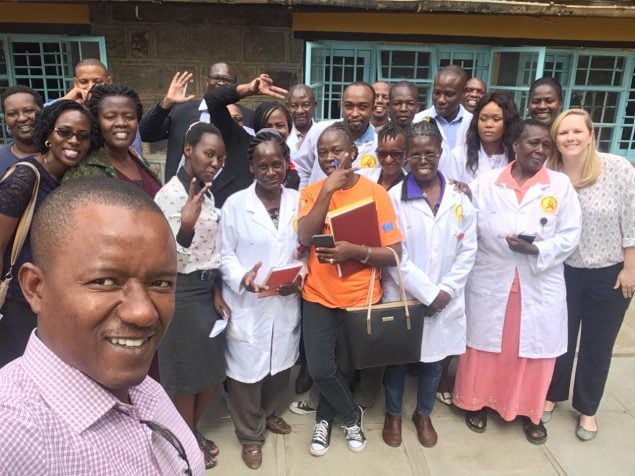TB Preventive Therapy
TPT South to South exchange visit
PEPFAR and CDC have prioritized TPT scale-up as a strategy to end TB. A target of 100% TPT coverage among all eligible patients over FY19 and FY20 was set. Kenya has had great success with their TPT program, where an estimated 85% of PLHIV have received TPT. A one-week TPT learning exchange was conducted in May, for Zimbabwe, Uganda and Zambia teams to learn from Kenya’s experience. Participants were drawn from the relevant Ministries of Health, inter-agency teams and implementing partners.
Lessons learned:
- It is possible to achieve >90% TPT coverage with the right planning and collaboration between all key stakeholders (MoHCC, partners and PLHIV).
- A clear TPT policy and guideline should be developed and consistently communicated, with buy in from the relevant political authorities.
- Success in supply chain management can be achieved through close collaboration between laboratory, pharmacy and clinical teams. To prevent medicine stock out, order based on anticipated consumption, especially during a rapid expansion period. Expiry of commodities can be reduced by use of an expiry tracker chart at all levels.
- Our current TPT guidelines state, isoniazid and pyridoxine should be given simultaneously to prevent peripheral neuropathy as recommended by the World Health Organization (WHO). However, this has created problems in implementation with facilities having reporting stock out of either drugs. During the exchange visit we noted Kenya achieved >90% coverage prescribing and dispensing isoniazid (INH) alone without pyridoxine and <1% of the patients reported peripheral neuropathy. Pyridoxine was prescribed only after patients presented with peripheral neuropathy. Efficient and effective pharmacovigilance monitoring and reporting improved TPT adherence and completion.
- It is critical to identify TPT champions among MoHCC leadership, clinicians and patients. Expert clients help with demand creation and allaying fears surrounding TPT medicines adverse events. Civil Society Organizations (CSO) involvement is key in creating demand.
- Improving data quality is critical to monitor implementation progress. This was achieved through use of electronic health systems . Uganda developed a weekly dashboard which identifies poor performing health facilities and remediation plans are immediately activated.

Photo: Dr Talent Maphosa (CDC-Zimbabwe) selfie moment with the Kathiani Sub County hospital team, CDC team, and other stakeholders during a South to South TPT learning visit.
After the learning visit, CDC Zimbabwe convened a national TPT stakeholders meeting to review implementation progress and update national guidelines. All ten provincial MoHCC teams, stakeholders and IPs attended the meeting. It was agreed that Zimbabwe must scale up TPT to reduce the burden of TB among PLHIV. TPT treatment guidelines were also reviewed in order to remove the bottlenecks. Changes made to the national guidelines include ART and TPT same day initiation for new HIV patients. All PLHIV on ART who have never received a course of TPT are being recalled to health facilities and started IPT as soon as possible. Patients’ resupply of TPT medicines and ART are now synchronized to ensure adherence and timely completion.